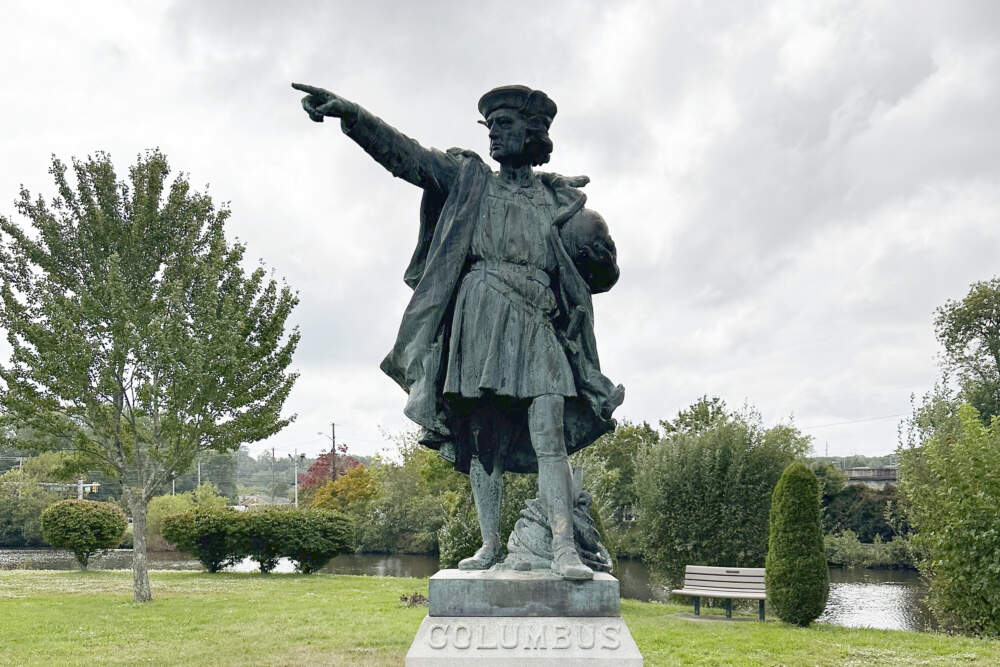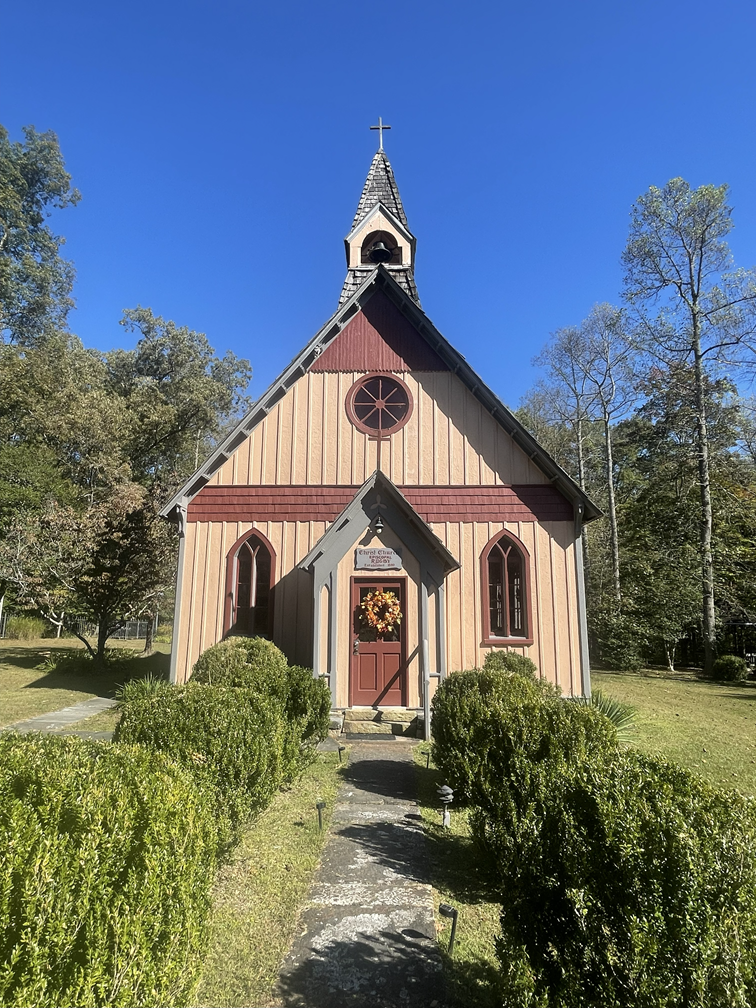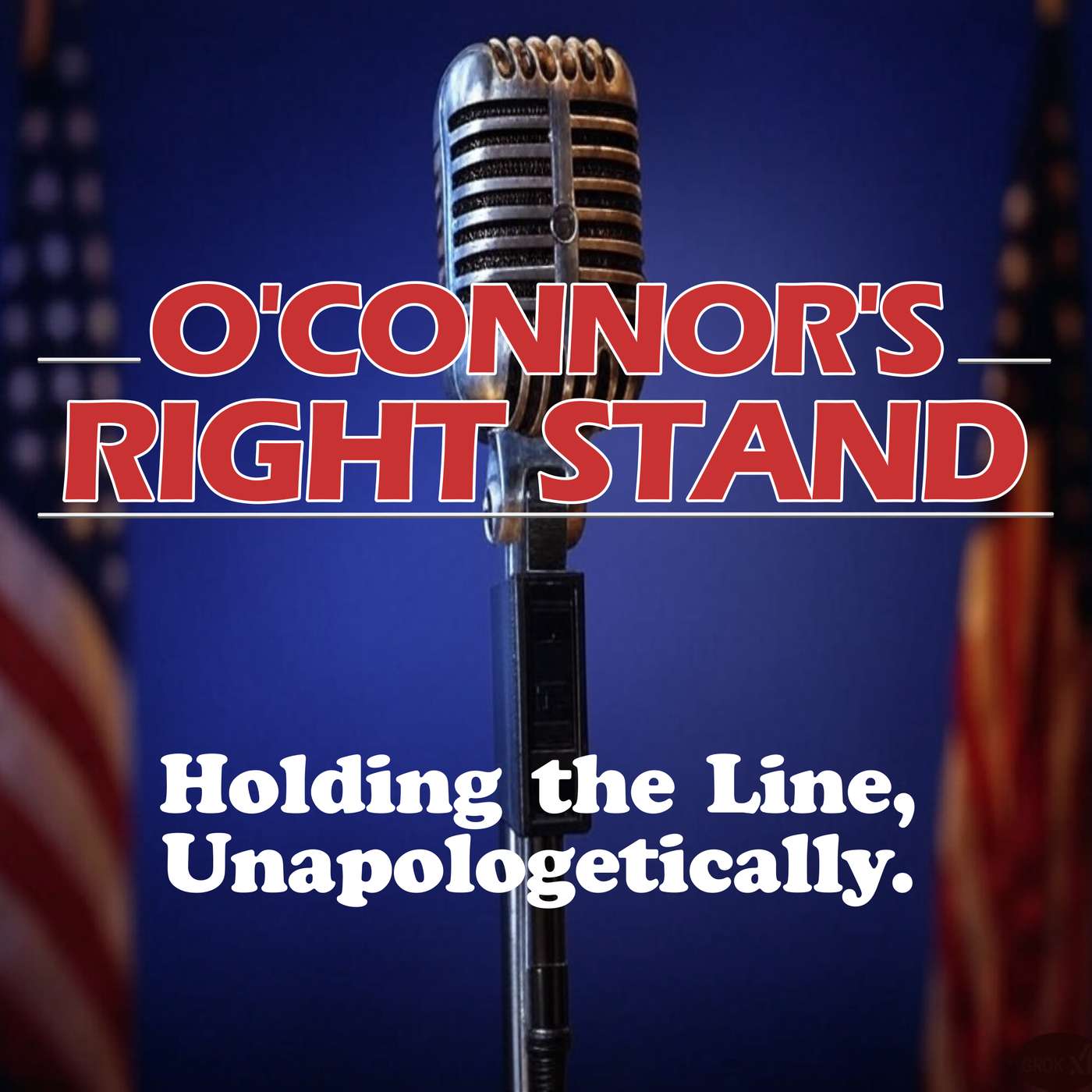Trump's Middle East Victory, The Dark Truth Behind Columbus Day, and Rugby's Failed Utopia

Trump's Middle East Victory, The Dark Truth Behind Columbus Day, and Rugby's Failed Utopia: Three Stories That Define American Leadership
October 14, 2025 | By John O'Connor
Yesterday marked a turning point in world history. President Donald Trump brokered a comprehensive Middle East peace deal that brought every living Israeli hostage home after two years of captivity. But yesterday was also Columbus Day—a holiday with a far darker origin than most Americans realize. And this past weekend, I visited Rugby, Tennessee, a beautifully preserved Victorian village that was supposed to be a utopian paradise but failed spectacularly.
Three seemingly unconnected stories. One unifying theme: the difference between idealism and reality, between what sounds good and what actually works.
Trump Delivers What Biden Couldn't: Peace in the Middle East
After nine months of relentless diplomacy backed by American military strength, President Trump accomplished something the Biden administration failed to achieve in two full years—he ended the Gaza war and brought home every Israeli hostage taken during the October 7, 2023 Hamas terrorist attack.
The timeline tells the story. On October 7, 2023, Hamas terrorists launched a brutal assault on Israel, murdering over 1,200 people and dragging approximately 250 hostages back into Gaza. For 738 days, these families lived in agonizing uncertainty. The Biden administration offered speeches, meetings, and empty promises. Results? Zero.
Trump took office in January 2025. Within nine months, his team—led by son-in-law Jared Kushner and special envoy Steve Witkoff—crafted a detailed 20-point peace plan working with mediators from Egypt, Qatar, and Turkey.
How Trump Closed the Deal
On September 30, Trump forwarded his proposal to Hamas with a simple message: Accept this deal or face complete obliteration. He gave them until Sunday, October 5 at 6 p.m. Washington time to respond.
Hamas blinked.
By October 8, both Israel and Hamas had accepted the framework. The formal signing ceremony took place October 9 in Egypt, with leaders from more than 20 nations in attendance. The ceasefire took effect Friday, October 10, and by Monday, October 13, all twenty living hostages walked free.
The deal required difficult compromises. Israel agreed to release approximately 2,000 Palestinian prisoners, including 250 serving life sentences and 1,700 detained since the war began. The bodies of 28 deceased hostages are being returned, though only four had been transferred as of Monday.
The Two-Phase Peace Plan
Phase One establishes the immediate ceasefire and secures hostage release. Israel maintains control of roughly 53% of Gaza during this initial phase to ensure compliance and security.
Phase Two, currently being negotiated, addresses long-term stability. Hamas must completely disarm, Gaza will be demilitarized, and an international board headed by Trump and former British Prime Minister Tony Blair will oversee Gaza's reconstruction and administration.
Trump addressed Israel's Knesset to a standing ovation Monday morning before flying to Egypt for the international peace summit. Egyptian President Abdel Fattah el-Sisi called the signing "the birth of a glimmer of hope for the entire region."
Even Trump's critics couldn't deny the achievement. Senate Minority Leader Chuck Schumer praised the administration: "Finally, finally, finally, the last living hostages are home." When Schumer compliments Trump, you know something extraordinary happened.
What Made This Possible
The answer is simple: American strength.
In June, the United States launched Operation Midnight Hammer—massive strikes on Iranian nuclear facilities. When asked about Iran's nuclear program yesterday, Trump responded bluntly: "They don't have a nuclear program. It was obliterated."
That demonstration of force, combined with Israel's military victories in Lebanon and Gaza, sent an unmistakable message throughout the Middle East. Qatar, Saudi Arabia, the UAE, Jordan, Egypt, and Turkey—nations that spent years on the sidelines—suddenly united to push this deal through.
Biden had two years and accomplished nothing. Trump delivered peace in nine months through strength, not weakness.
The Ugly Truth Behind Columbus Day
While the nation celebrated Columbus Day yesterday with closed schools and government offices, few Americans understand the holiday's actual origin. The first national Columbus Day wasn't proclaimed to honor Italian heritage or celebrate exploration. It was political damage control following the largest mass lynching in American history.
The New Orleans Massacre of 1891
On March 14, 1891, a mob in New Orleans murdered eleven Italian Americans in cold blood. The victims weren't criminals or mobsters—they were working-class immigrants: dock workers, cobblers, fruit vendors, tinsmiths, and a plantation laborer. Men trying to build better lives for their families.
The tragedy began five months earlier. On October 16, 1890, New Orleans Police Superintendent David Hennessy was shot and killed walking home from work. Despite having zero evidence pointing to specific suspects, the city immediately blamed Italians.
The New Orleans City Council granted $15,000 to something called the "Committee of Fifty"—not to find the actual murderers, but specifically to secure convictions of Italians. Any Italians.
Nineteen Italian men were arrested. Nine went to trial. Six were acquitted because there was no evidence. The remaining three ended in mistrial. American justice had worked. They should have walked free.
When Newspapers Advertised a Lynching
The day after those verdicts, local newspapers published notices calling for "good citizens" to assemble at the Henry Clay monument at 10 a.m. to "take steps to remedy the failure of justice." The ads explicitly told readers to "come prepared for action."
Think about that—newspapers literally advertising when and where to meet for a lynching.
The Italian consul begged Louisiana's governor to intervene. The governor said he needed the mayor's permission. The mayor had conveniently left for a breakfast appointment and couldn't be located.
At 10 a.m. on March 14, 1891, thousands gathered—some estimates say 10,000 people. This wasn't just an angry mob. The crowd included attorneys, government officials, and prominent citizens. Future mayors and governors participated.
They marched to Orleans Parish prison, broke down the doors, and dragged out eleven men. Some were shot repeatedly. Others were hanged. Bodies were displayed like hunting trophies while the crowd cheered and ripped pieces off as souvenirs.
The next day, the New York Times headline read: "Chief Hennessey Avenged. Italian Murderers Shot Down." Most American newspapers congratulated the mob. A grand jury was convened, but the judge was personal friends with several lynching participants. On May 5, 1891, the grand jury declined to indict anyone.
No one was ever prosecuted.
An International Crisis
Three of the murdered men were Italian nationals—citizens of Italy, not the United States. Italy was outraged. On March 31, 1891, Italy severed diplomatic relations with America. Their ambassador went home. Italian parliament members introduced resolutions calling for a retributive naval assault on America's eastern seaboard.
President Benjamin Harrison suddenly faced a potential war with Italy, plus a domestic political crisis. He'd won the 1888 election but lost the popular vote to Grover Cleveland, who was positioning for a comeback in 1892. Harrison needed every vote he could get—including Italian-American votes.
The Political Solution
Harrison implemented a two-part strategy. First, he paid $25,000 in reparations to Italy—an acknowledgement that something terrible happened without admitting American fault.
Second, and more significantly, Harrison decided to elevate Christopher Columbus as a celebrated American hero.
On July 21, 1892, Harrison issued a proclamation urging Americans to celebrate the 400th anniversary of Columbus' arrival in the New World. Though Columbus actually landed October 12, 1492, making October 12, 1892 the true 400th anniversary, Harrison's official proclamation called for celebrations on Friday, October 21.
New York City ignored that and held their massive celebration on the actual anniversary date. More than one million people gathered. A parade with 40,000 participants marched through the streets. The next day, the massive 76-foot Columbus Circle statue was unveiled.
Over subsequent decades, Columbus statues appeared in Italian-American neighborhoods nationwide. The connection between Columbus and Italian-American identity was cemented.
But let's be clear—Columbus Day wasn't created from genuine respect for Italian Americans or their contributions to America. It was created as political damage control to win an election and prevent a war. It was designed to make Americans forget about eleven murdered men who never received justice.
Rugby, Tennessee: When Utopian Dreams Meet Reality
This past weekend, I visited Rugby, Tennessee—a beautifully preserved Victorian village on the Cumberland Plateau that tells a powerful story about the difference between idealistic visions and practical reality.
The Vision
Rugby was founded in 1880 by British author Thomas Hughes, best known for his novel "Tom Brown's School Days." Hughes wasn't building an ordinary frontier town. He was attempting to solve a uniquely British problem.
In Victorian England, primogeniture meant the oldest son inherited everything—the estate, title, and money. Second and third sons received nothing. You had educated, cultured young men from the British gentry with fancy educations but zero prospects.
Manual labor was considered beneath the upper classes, so these "second sons" couldn't work with their hands without destroying their social standing. The economic depression of the 1870s worsened everything, creating hundreds of educated young British men with no income and no future.
Hughes had what seemed like a brilliant idea: create a colony in America where class distinctions didn't matter, where British gentlemen could work with their hands without shame, where everyone pitched in equally based on Christian principles and cooperative labor.
Building the Dream
In 1879, Hughes and British lawyers purchased approximately 35,000 acres on the Cumberland Plateau for 20 cents to $2 per acre, planning to sell it to settlers for 50 cents to $25 per acre.
On October 5, 1880, Thomas Hughes arrived for Rugby's official opening and laid out his vision. Every colonist invested $5 to ensure public ownership. Personal freedoms were guaranteed (though alcohol was banned). They'd build an Episcopalian church any denomination could use.
The colonists went wild building cultural amenities:
- The Tabard Inn: A three-story inn named after the famous inn in Chaucer's Canterbury Tales, featuring decorative wooden railings shipped from the original 1383 English inn
- Christ Church Episcopal: Built in beautiful Gothic style with organ and altar hangings imported from England
- Thomas Hughes Free Public Library: Stocked with over 7,000 books, many first editions
- Tennis courts and croquet lawns
- A newspaper edited by Oxford graduates
- Theater productions and social clubs
The New York Times and Harper's Weekly followed Rugby's progress closely. This was major news—British aristocrats and American pioneers working together, building a model community based on cooperation and equality.
At its peak, Rugby had about 350 residents and roughly 70 buildings. For a brief moment, utopia seemed possible.
The Collapse
Then reality arrived.
A typhoid epidemic in 1881 killed seven people—devastating for a community of only 350. Fires destroyed multiple buildings. But the fundamental problem was simpler: nobody knew how to farm.
These educated British gentlemen knew literature, philosophy, and tennis. They didn't know agriculture. The Cumberland Plateau's rocky, difficult soil required knowledge and skills the colonists simply didn't possess.
They'd spent their resources building tennis courts, libraries, and fancy inns while neglecting basic infrastructure like roads and proper housing. They'd created a resort when they needed a working farm community.
By 1892, the utopian dream was dead. The Board of Aid reorganized as the Rugby Tennessee Company and focused on harvesting timber and minerals for profit. All those anti-materialistic ideals vanished. By 1900, the company had sold its holdings and most colonists had left.
The Legacy
A small community remained. The Walton family maintained the library and church through the mid-1900s. In 1966, a 17-year-old named Brian Stagg from nearby Deer Lodge led preservation efforts. Today, over 20 original Victorian buildings still stand.
You can visit Rugby, walk through that library with its original books, attend Sunday services in that Gothic church, and step back into 1880. The preservation is remarkable.
But what Rugby really teaches us is this: Thomas Hughes had a beautiful vision of a classless society where everyone worked cooperatively. That vision failed because good intentions aren't enough. You can't build sustainable communities on idealism alone. You need practical skills, agricultural knowledge, and realistic expectations about survival.
The colonists who actually succeeded in building America weren't chasing utopian dreams. They were the ones who showed up with axes, plows, and knowledge of how to work the land.
The Connecting Thread
Three stories from one remarkable day, all teaching the same lesson.
Trump's peace deal succeeded because it was built on strength and practical diplomacy, not wishful thinking about what should work. The Columbus Day story reminds us that political solutions often paper over rather than solve deeper problems. Rugby's failure demonstrates that beautiful visions mean nothing without the practical skills and hard work to make them reality.
In 1880s Rugby and 2025 America, the truth remains the same: we don't need more utopian schemes and grand theories. We need people willing to do the hard, practical work of building and maintaining civilization.
America wasn't built by dreamers in ivory towers. It was built by people willing to work hard, face reality, and never give up. That's what made us great. That's what will keep us great.
Images from my visit to Rugby, Tennessee will be added to this post soon. Check back for photos of the preserved Victorian buildings and library.
John O'Connor is a software programmer and conservative commentator. Find him on X at @OConnorPodcasts or visit OConnorsRightStand.com for more content. Don't forget to check out OConnorsQuickStrike.com







